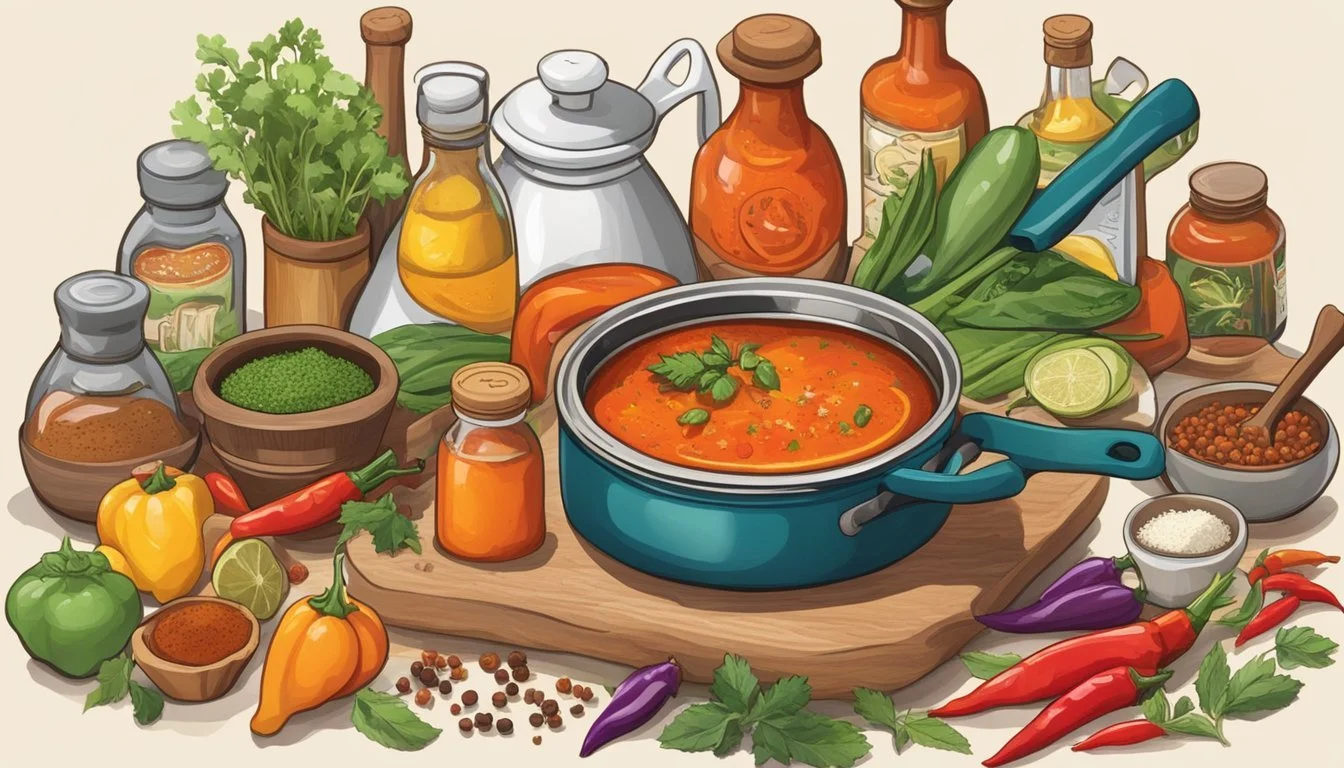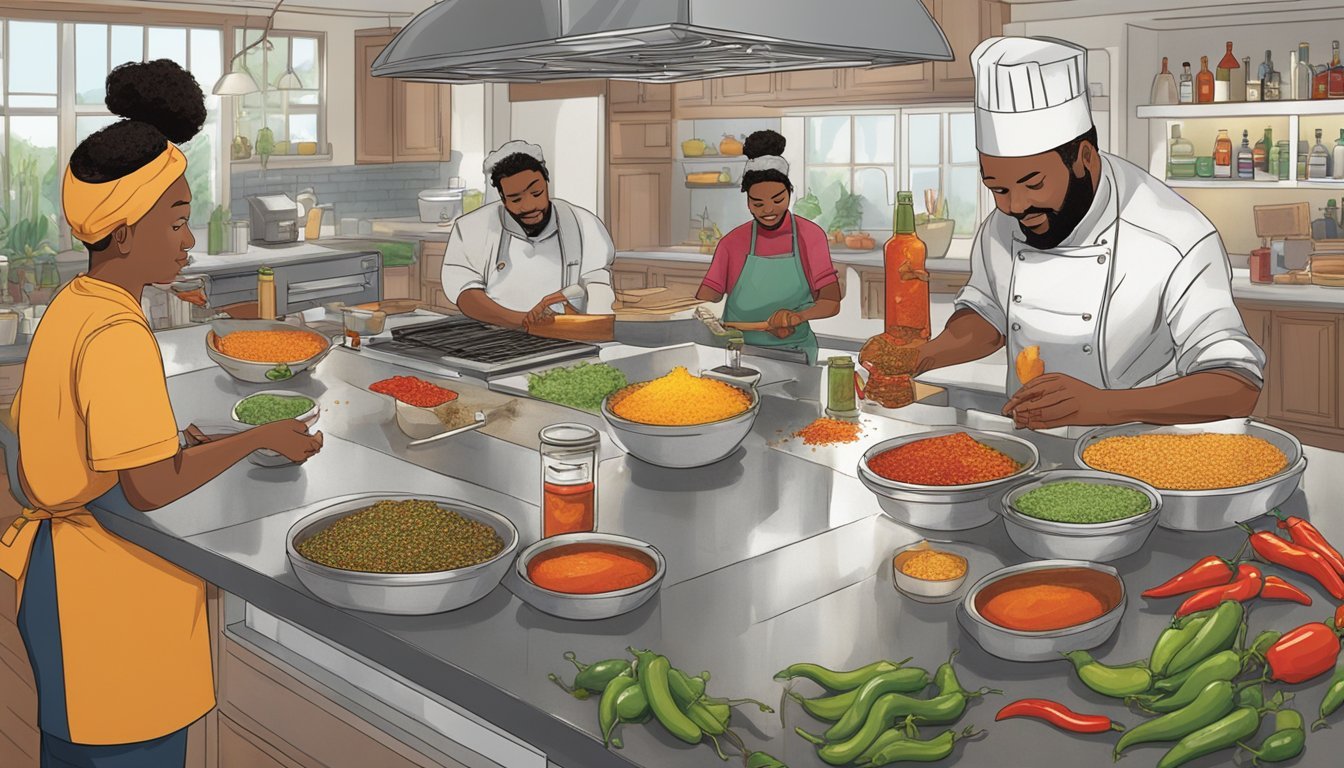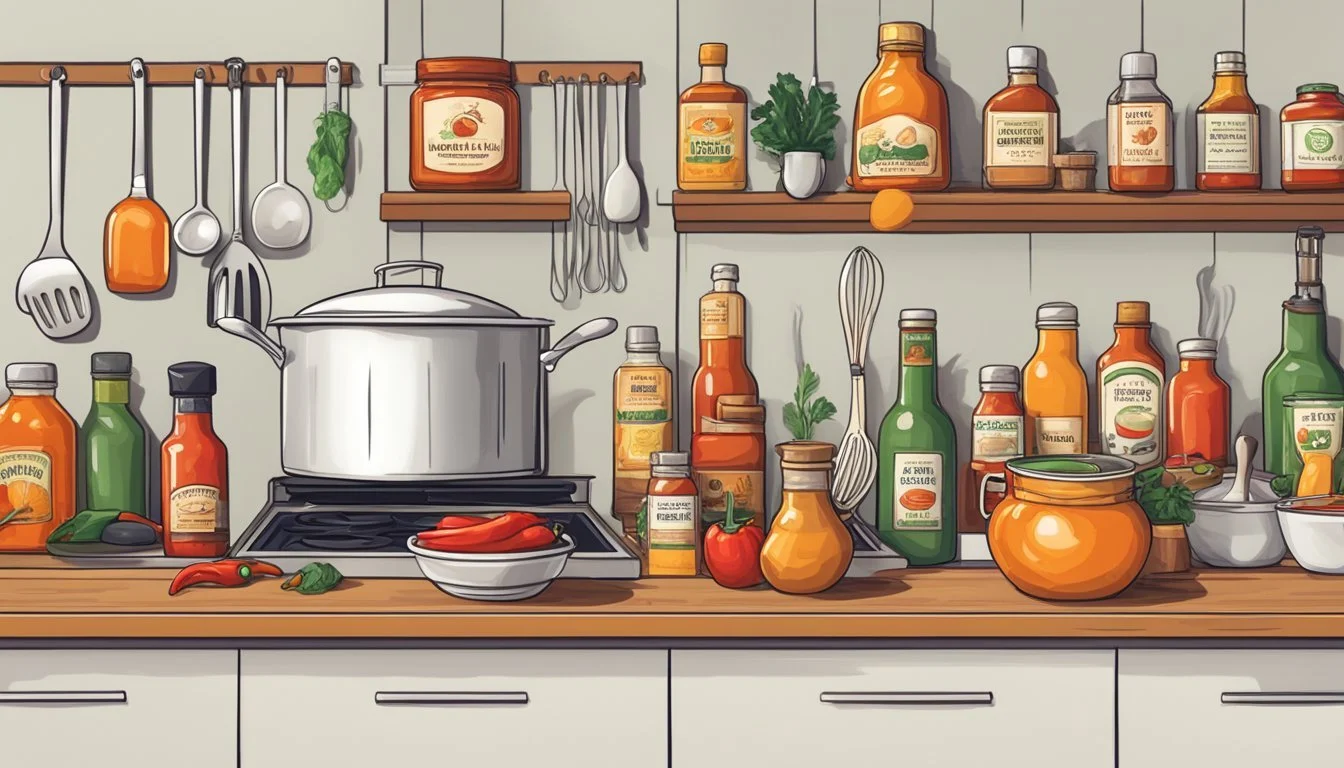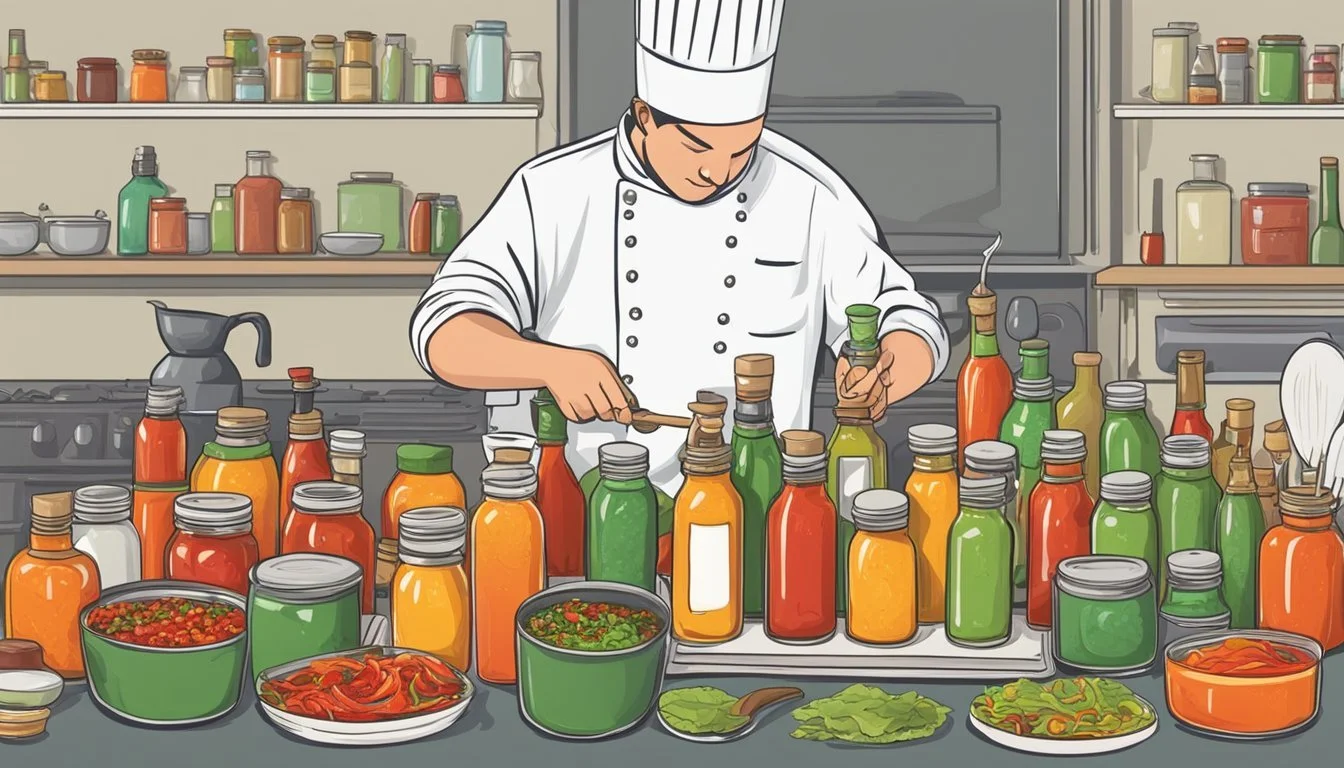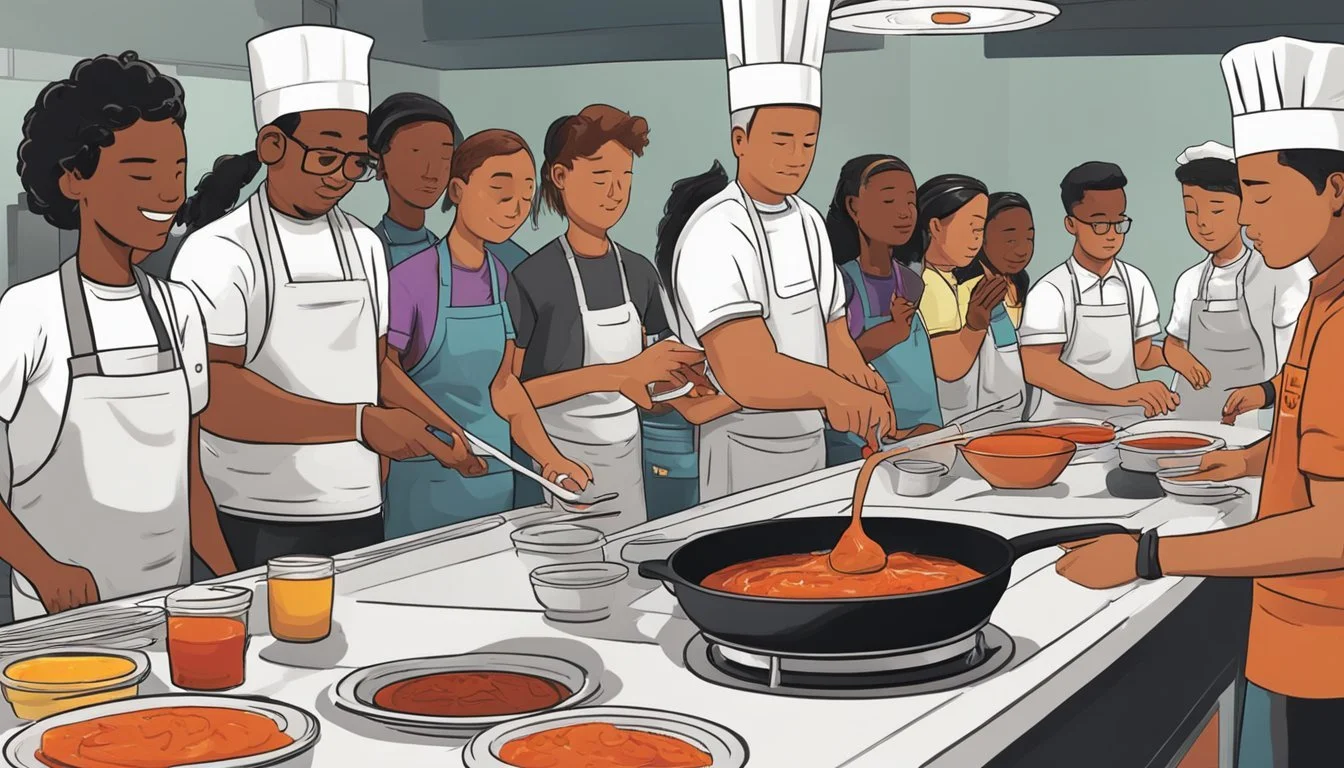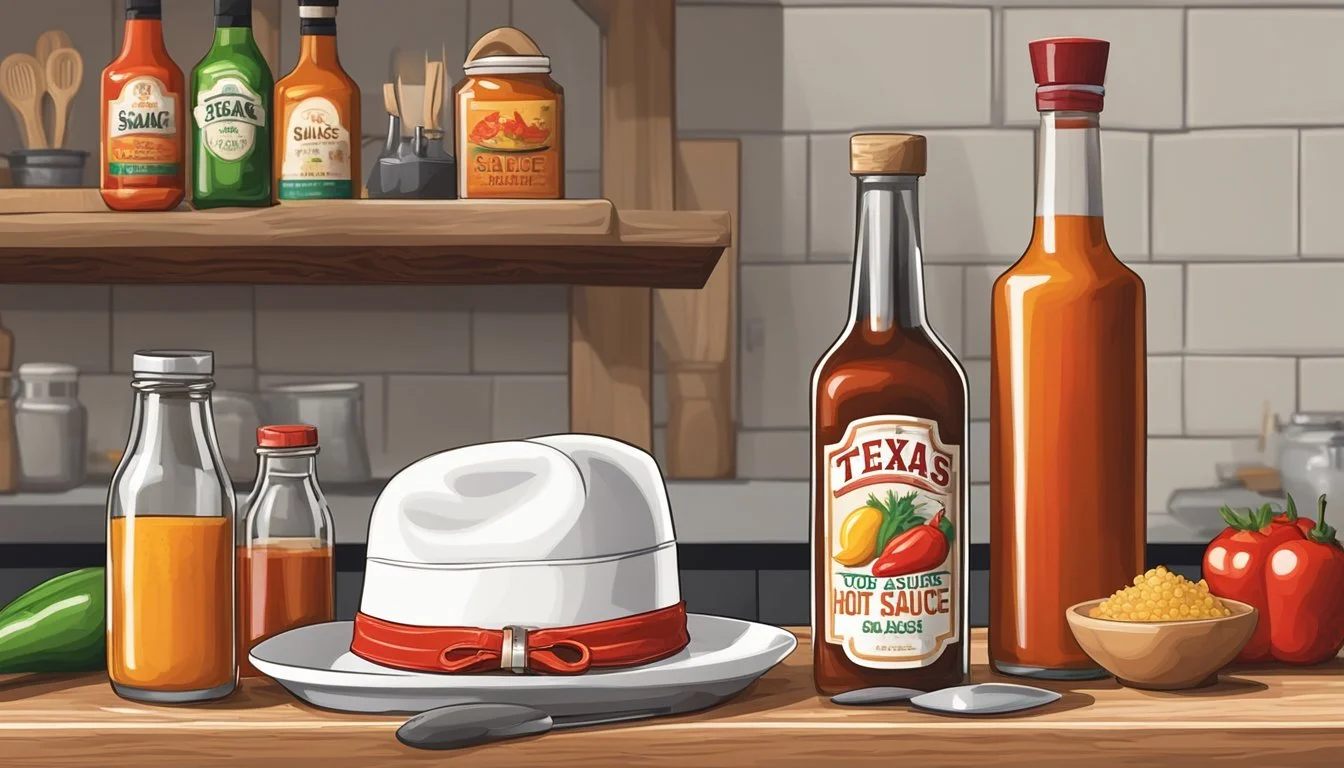The Rise of Texas Hot Sauce Cooking Classes
Spicing Up Culinary Skills
In recent years, Texas has become a hub for culinary enthusiasts eager to explore the spicy and savory world of hot sauces. The state's rich and diverse food culture has paved the way for a surge in cooking classes and workshops focused on hot sauce creation. These specialized courses cater to a growing interest in both small-batch artisanal sauces and robust commercial varieties. Participants from all culinary backgrounds come together to learn the art of balancing heat with flavor, mastering the craft of hot sauce making in a state known for its appreciation of a little extra kick in its cuisine.
Across Texas, from Houston to Austin, food-centered events and educational experiences like hot sauce festivals and virtual workshops celebrate the fiery condiment. They provide a platform for hot sauce aficionados to delve into the techniques of sauce preparation from roux-based methods to the practices of fermenting peppers. The shared experience of creating and tasting hot sauces unites people and contributes to the community aspect intrinsic to Texan culture.
Cooking classes in this genre typically offer a hands-on approach, guiding students through the process of selecting the right peppers, understanding the influence of other ingredients, and achieving the perfect consistency. Whether for the recreational home cook or the aspiring saucier, Texas cooking classes provide both technique and inspiration in the creation of hot sauces. They not only foster an appreciation for the culinary arts but also celebrate local flavors and ingredients, further entrenching the state's reputation as a destination for bold and zesty culinary adventures.
History of Texas Hot Sauce
The unique flavors of Texas hot sauce have deep roots in the state's history, shaped by cultural traditions and a love for heat. It has become an integral part of Texas cuisine, evolving into a varied and complex industry.
Origins of Hot Sauce in Texas
The initial foray of hot sauce in Texas can be traced back to the early use of chili peppers by indigenous people. Texas's relationship with spicy condiments began with the adoption of Native American and Mexican customs, which heavily employed chili peppers. These peppers were not only used for their flavor but also for their natural preservative qualities in meats. The original Texan hot sauces were simple, with a base of peppers and vinegar.
In the early 20th century, with the commercialization of hot sauce, Texas began to make its mark. Local entrepreneurs and cooks started creating their own spicy concoctions, leading to a variety of unique flavors synonymous with the region. These sauces frequently featured locally grown peppers, harnessing the heat and flavor profiles native to Texas soils.
Cultural Significance
Hot sauce in Texas is much more than a condiment; it's a cultural symbol, representing the state's diverse history and its people's zest for life. The hot sauce industry has bolstered local economies and fostered community through events like the Texas Hot Sauce Festival, which celebrates the fiery condiment. The festival itself has created many memories and traditions over its 30-year history, emphasizing the importance of hot sauce to Texan identity.
Moreover, Texas has been a notable contributor to America's hot sauce industry, currently valued at over $1.1 billion. This lucrative market reflects the cultural significance of hot sauces, not just as a food additive, but as a component of Texas's culinary legacy. The state's hot sauce makers continue to innovate while preserving the bold flavors that make Texas hot sauce a staple in kitchens around the world.
Overview of Cooking Workshops and Classes
In Texas, a diverse array of cooking workshops and classes has emerged, offering individuals a unique opportunity to enhance their culinary skills and explore the vibrant world of hot sauces.
Types of Cooking Classes
Hearth Cooking: Participants learn traditional methods of cooking over an open hearth, crafting seasonal meals with a historic twist.
Virtual Hot Sauce Making: These online workshops provide step-by-step guidance to produce two varieties of hot sauces from the comfort of home.
Game Cooking: Specifically designed for hunters, this type of class focuses on the preparation of wild game for table consumption through a series of workshops.
Specialty Skills: Classes such as Sauce Boot Camp cater to more specific culinary techniques like making roux, béchamel, and various methods of sauce preparation.
Benefits of Participating
Skill Enhancement: Persons of all skill levels can learn or refine their abilities in various aspects of cooking, including sauce making and traditional cooking methods.
Culinary Exploration: Attendees can delve into the rich culinary heritage of Texas and master the art of hot sauce creation, which is integral to the region's cuisine.
Connection and Sharing: Cooking classes and workshops serve as a platform to meet fellow enthusiasts, providing a space for individuals to share their passion for food.
Hot Sauce Making Techniques
Creating hot sauce involves a meticulous combination of ingredients and a controlled cooking or fermentation process to develop a rich, fiery flavor profile that appeals to those with a passion for heat.
Selection of Ingredients
The foundation of any hot sauce recipe lies in the careful selection of ingredients. A variety of chili peppers, each with their own unique Scoville heat units, defines the hot sauce's spiciness. Commonly, the base also includes aromatics such as garlic, and a binding oil, often olive oil for its neutrality and stability.
Peppers: Choose based on desired heat level (e.g., jalapeño, habanero, ghost pepper).
Aromatics: Garlic adds depth, combined typically with onions to enhance flavor.
Oil: Olive oil can be used to sauté ingredients and carry flavors.
Cooking and Fermentation Process
The cooking and fermentation process of hot sauce can vary widely, but it generally starts by sautéing the chosen ingredients to intensify flavors. Patience is key, as some recipes benefit from fermentation, where the sauce is left to rest for several days to develop complexity.
Cooking Time: Sauté ingredients until aromatic before blending.
Fermentation: If fermenting, let the sauce rest to allow flavors to mature.
Storage: Store hot sauces in well-sealed containers, ideally in cool conditions to preserve flavors and prevent spoilage.
Exploring Pepper Varieties
In the diverse world of chili peppers, understanding their heat level and knowing popular regional varieties are essential for enthusiasts and chefs alike. These factors are vital in choosing the right peppers for creating signature hot sauce flavors.
Understanding SHU Scale
The Scoville Heat Unit (SHU) scale is the standard measurement of spiciness in chili peppers. It ranges from 0 for bell peppers to over 2 million for the Carolina Reaper. This scale quantifies capsaicin concentration, the chemical responsible for the spicy sensation.
Jalapeño Pepper: 2,000 to 8,000 SHU
Habanero Pepper: Typically around 100,000 to 350,000 SHU
Popular Texas Peppers
Texas embraces a variety of peppers that thrive in its climate. Among them, two stand out for their frequent use in hot sauces:
Jalapeño: These peppers are relatively mild with a versatile flavor profile, making them a staple in many Texas hot sauces.
Habanero: Known for their fruity aroma and intense heat, Habaneros are a favorite for those looking to add significant warmth to their dishes. They come in a range of colors, adding not just spice but visual appeal to culinary creations.
Hot Sauce Recipes and Flavor Profiling
Exploring Texas hot sauce is a journey through bold flavors and culinary creativity. Texans prefer their sauces with a distinctive heat profile that is as robust as it is flavorful. Learning to craft these sauces involves understanding traditional recipes and venturing into new flavor territories.
Classic Texas Hot Sauce Recipes
Texas hot sauce recipes are revered for their simplicity and depth. A quintessential ingredient is the chili pepper, which provides the characteristic heat. These recipes often include a base of tomatoes or tomato sauce to balance the fieriness. Garlic and onions are staple aromatics that build the foundational flavors, often sautéed in butter to bring out their natural sweetness.
Key Ingredients:
Chili peppers (e.g., jalapeños, serranos)
Tomatoes or tomato sauce
Garlic
Onions
Butter (optional, for sautéing)
The traditional seasoning may be as simple as salt and a dash of sugar to round out the sharpness, allowing the primary heat source, the pepper, to shine through. Cooking classes emphasize techniques like fermenting, which deepens the sauce's complexity.
Innovative Flavor Combinations
Texas cooking classes also encourage the exploration of innovative flavor combinations, pushing beyond the conventional by integrating unexpected ingredients into hot sauce recipes. The addition of condiments such as fish sauce or soy sauce introduces umami undertones, while a sprinkle of sugar can offer a subtle sweetness that balances the heat.
Non-traditional Add-ins:
Umami sources: Soy sauce, fish sauce
Sweeteners: Brown sugar, honey
Acids: Apple cider vinegar, lemon juice
Participants learn to adjust these elements to create a sauce that delivers a unique blend of heat, sweetness, tang, and depth. The result is a hot sauce that's not just an accompaniment but a highlight of any dish it graces.
Event Planning with Hot Sauce Themes
In Texas, event planners are capitalizing on the state's love for spicy flavors by integrating hot sauce into various gatherings, from specialized tasting soirées to large-scale festivals.
Hot Sauce Tasting Events
When planning a hot sauce tasting event, organizers meticulously curate a selection of hot sauces, often ranging from locally-produced artisanal concoctions to internationally-acclaimed brands. These events can take place in intimate settings like boutique food shops or larger venues for a broad audience. Attendees have the opportunity to taste and experience an assortment of hot sauces, often accompanied by a palate cleanser such as bread or dairy products.
Key Components for a Tasting Event:
Venue: Select a location that can accommodate setup for multiple tasting stations.
Selection: Offer a diverse range of hot sauces, from mild to extremely hot.
Education: Provide information about each hot sauce, including its origin and heat level.
Accessibility: Ensure availability of cool-down options and first aid for capsaicin sensitivity.
Hot Sauce Festivals
Hot sauce festivals, such as the annual Austin Chronicle Hot Sauce Festival, are grand celebrations that combine gastronomy with entertainment. Patrons get to savor not only an immense variety of hot sauces but also enjoy experiences like live music performances, thus appealing to a broader demographic.
At the heart of these festivals in Austin and other Texas cities is a synergy of experiences. Local and international hot sauce manufacturers often participate as exhibitors, offering festival-goers a chance to purchase their spicy wares. The inclusion of music and culinary demonstrations contributes to an immersive event that celebrates the fiery side of Texan cuisine.
Essentials for a Successful Hot Sauce Festival:
Music and Entertainment: Curate a lineup of local bands and performers for a lively atmosphere.
Culinary Demonstrations: Schedule cooking shows to illustrate the versatility of hot sauces.
Vendor Participation: Encourage a mix of local and global brands to provide a rich experience.
Charity Component: Consider partnering with local food banks to tie the event to a charitable cause.
The Business of Hot Sauce
The hot sauce market has evolved enormously, giving rise to specialized cooking classes and workshops. Entrepreneurs have capitalized on this trend, finding innovative ways to start their businesses and grow their market presence.
Starting a Hot Sauce Business
When someone decides to start a hot sauce business, there are several critical steps they must undertake to ensure success. They must research the market to identify a niche or unique selling proposition that will help them stand out. Next is developing the product, which includes perfecting recipes, sourcing ingredients, and ensuring food safety compliance. Stores and online platforms become crucial for distribution, as does establishing a reliable delivery system to get products to customers. The process involves:
Market Research: Identifying demand and competition.
Business Plan: Outlining a strategy for production, sales, and growth.
Licensing and Compliance: Acquiring the necessary permits and following food regulations.
Sourcing: Establishing relationships with suppliers for consistent quality.
Distribution: Setting up online and physical retail presence.
Marketing and Brand Expansion
Marketing involves not only promoting a hot sauce business but also creating a brand that resonates with consumers. Entrepreneurs must focus on building brand recognition through various channels, including social media, food festivals, and local events. Brand expansion might involve extending the product line or widening the market reach into new geographic locales or through different store channels. Effective strategies include:
Branding: Designing a memorable logo and packaging.
Promotion: Leveraging social media, SEO, and influencer partnerships.
Retail Expansion: Pursuing stockists for physical and online retail platforms.
Customer Engagement: Using feedback to improve and diversify product offerings.
In crafting a business strategy, one should aim for consistency and adaptability to navigate the dynamic hot sauce market.
Community and Social Aspects
The rising popularity of hot sauce cooking classes and workshops in Texas not only caters to the culinary interests of individuals but also fosters community building and strengthens social bonds through shared experiences.
Social Gatherings and Hot Sauce
Texas hot sauce cooking classes have become vibrant social gatherings where enthusiasts and newcomers alike come together with a common purpose. These workshops present the perfect opportunity for socializing and offer participants a chance to connect over their love for spicy flavors. It's not uncommon for these events to transform into informal social clubs where people make new friends, share stories, and discuss the nuances of heat and flavor that define Texan hot sauce offerings.
Sharing with Family and Friends
Hot sauce workshops often encourage sharing the craft of sauce-making with family and friends. Participants take the knowledge and skills acquired from these classes back home, turning the making and tasting of hot sauces into a communal activity. Many find joy in presenting their homemade sauces to loved ones, extending the community aspect of the workshops into their personal lives. This sharing deepens relationships and can become a treasured family tradition, as well as a way to introduce friends to a slice of Texan culture.
Hot Sauce in Culinary Education
As hot sauce gains popularity, culinary education has begun incorporating specialized workshops and expert-led classes dedicated to this fiery condiment. These educational experiences are designed to enhance flavor proficiency and cooking technique centered around hot sauces.
Hot Sauce Workshops in Schools
Schools have started to acknowledge the culinary and cultural importance of hot sauce by introducing hot sauce workshops. These workshops focus on:
The history of hot sauce and its cultural significance.
The science behind fermentation and the creation of different flavor profiles.
Hands-on experience in sauce-making, including selecting peppers and other ingredients.
Students benefit from a comprehensive learning experience that goes beyond the traditional palate, engaging with hot sauce as a versatile component in cooking.
Expert-Led Demonstration Classes
Demonstration (demo) cooking classes led by experts provide an immersive environment where individuals can observe and learn from masters of the craft. Key aspects include:
Live demonstrations on the use of hot sauce in various cuisines.
Technique and skill development for balancing spice and flavor.
Engaging Q&A sessions with experts to deepen culinary understanding.
Through these classes, enthusiasts and professionals alike gain actionable insights into incorporating hot sauce into their repertoire, elevating their cooking to new heights.
Supplemental Products and Pairings
When considering Texas hot sauce cooking classes and workshops, one must not overlook the importance of selecting the right supplemental products and pairings. These components are crucial for enhancing the flavors and offering a complete culinary experience.
Complementary Food Items
In workshops focused on Texas hot sauces, certain foods serve as perfect canvases for these spicy condiments. These items often include proteins like chicken or beef, which can be marinated or glazed with the sauce. A range of seafood also pairs well, with shrimp being a particularly popular choice to carry the heat of the sauce. In vegetarian options, grilled vegetables such as bell peppers and onions harmonize with the kick of the hot sauce.
An array of cheeses, particularly those that balance spice with their creaminess, such as cheddar or Monterey Jack, also makes for excellent hot sauce companions. Going beyond entrees, cooking classes emphasize how hot sauce can elevate the humble egg—transforming scrambled, fried, or boiled eggs into a dish with a zesty twist.
Hot Sauce as Condiment
Hot sauce, due to its versatile nature, can also be a star condiment in various applications. Workshops often showcase its utility in:
Sandwiches and Wraps: A drop of Texas hot sauce can bring a lively punch to sandwiches and wraps, pairing especially well with deli meats or roast veggies.
Dressings and Marinades: By blending hot sauce with olive oil, vinegar, or other condimentary bases, it can become a flavorful dressing for salads or a powerful marinade for meats.
Dipping Sauces: Mixing hot sauce with sour cream or mayonnaise makes for a quick and easy dip for chips, fries, or crudité.
Additionally, these classes may demonstrate how to make hot sauce-infused butter or aioli, which can be spread over bread or used as a flavorful addition to burgers and seafood. These pairings are thoughtfully chosen to complement the fiery flavor profiles of Texas hot sauces while ensuring the heat is approachable and enjoyable.

